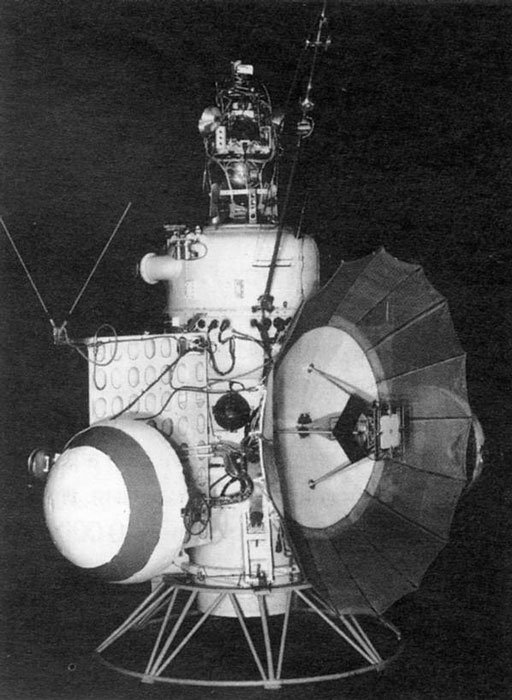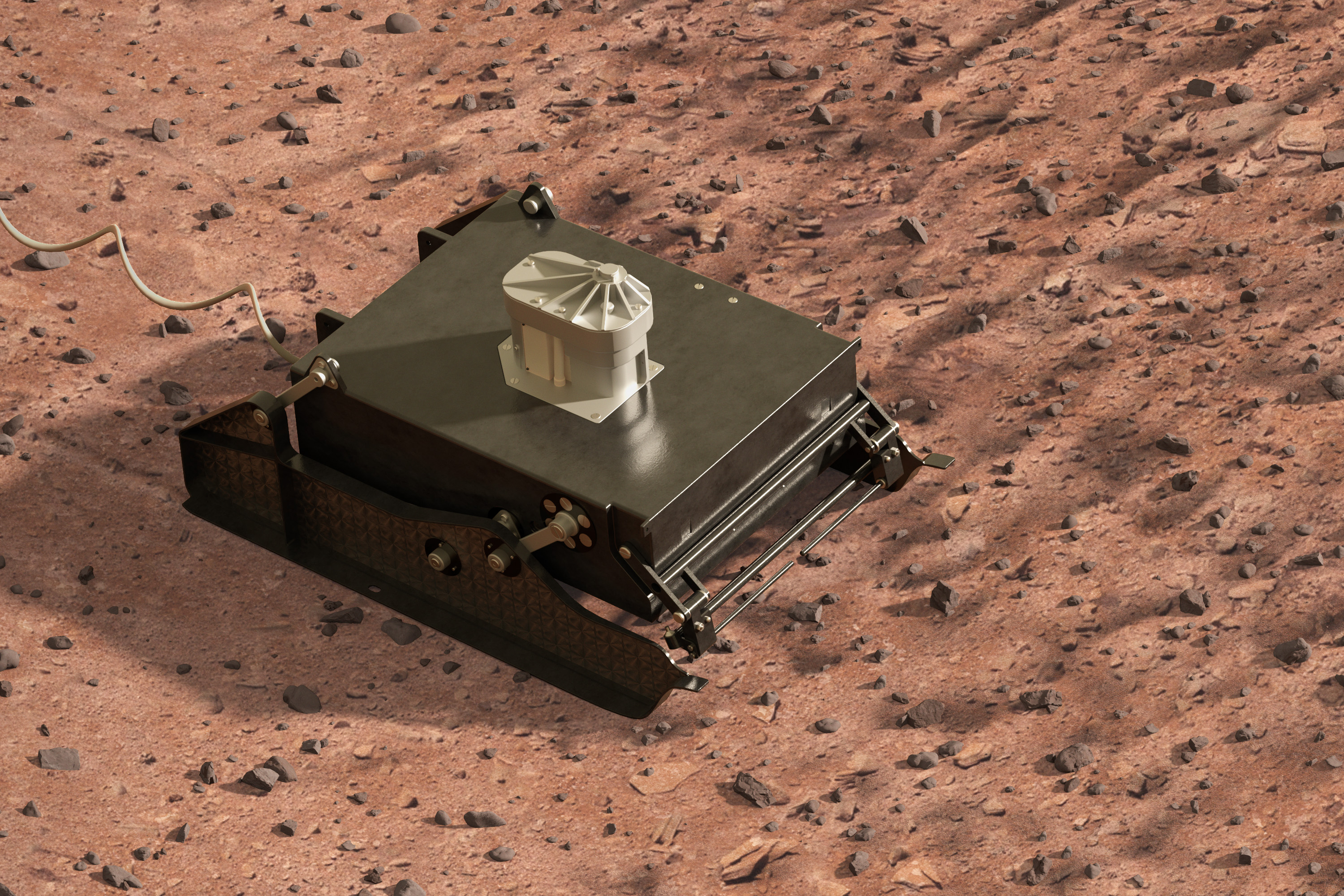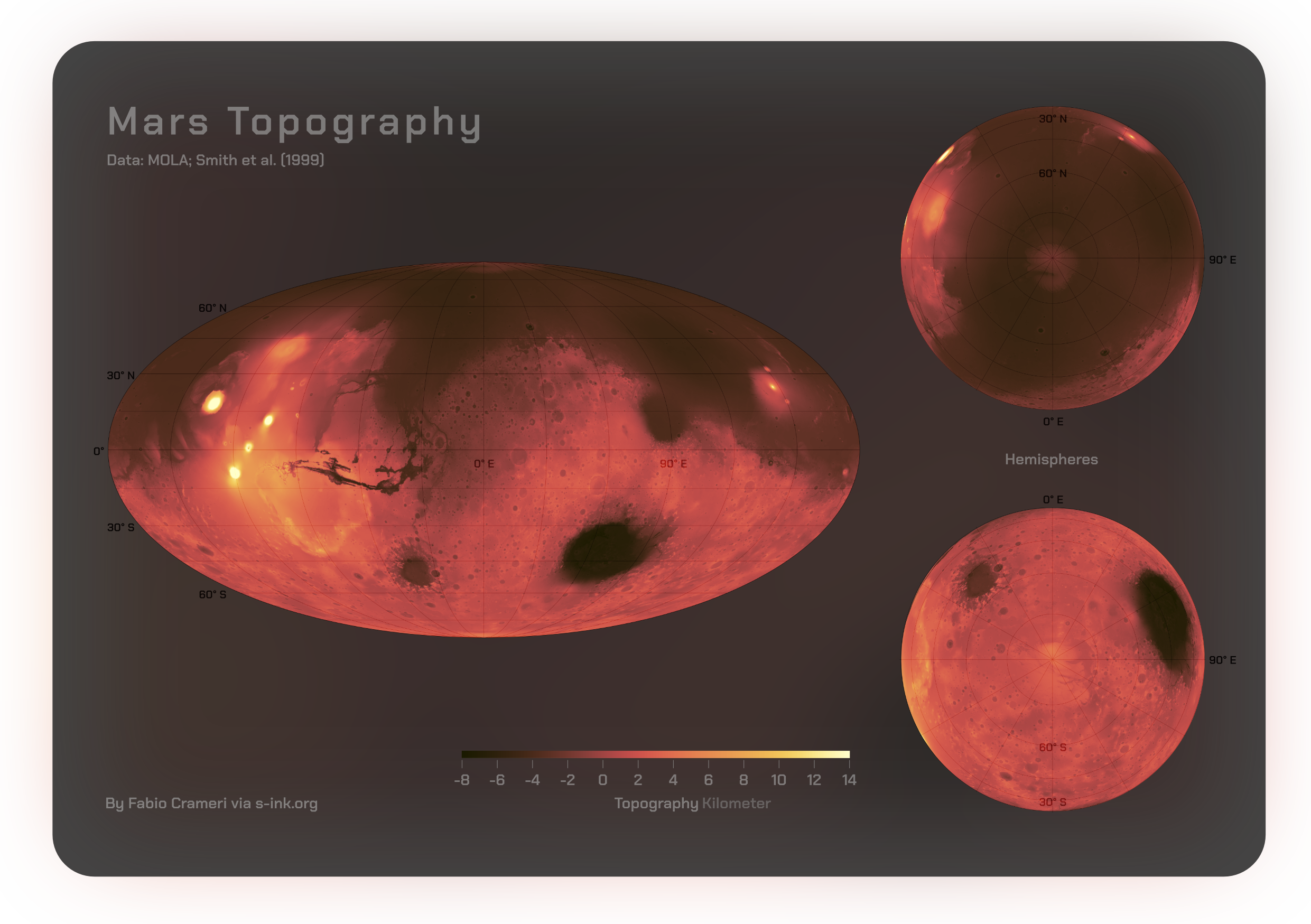|
Mars Program
The Mars program was a series of uncrewed spacecraft launched by the Soviet Union between 1960 and 1973. The spacecraft were intended to exploration of Mars, explore Mars, and included planetary flyby, flyby probes, Lander (spacecraft), landers and orbiters. Early Mars spacecraft were small, and launched by Molniya (rocket), Molniya rockets. Starting with two failures in 1969, the heavier Proton-K rocket was used to launch larger 5 tonne spacecraft, consisting of an orbiter and a lander to Mars. The orbiter bus design was likely somewhat rushed into service and immature, considering that it performed very unreliably in the Venera variant after 1975. This reliability problem was common to much Soviet space hardware from the late 1960s and early 1970s and was largely corrected with a deliberate policy, implemented in the mid-1970s, of consolidating (or "debugging") existing designs rather than introducing new ones. The names of the "Mars" missions do not need to be translated, as th ... [...More Info...] [...Related Items...] OR: [Wikipedia] [Google] [Baidu] |
Uncrewed Spacecraft
Uncrewed spacecraft or robotic spacecraft are spacecraft without people on board. Uncrewed spacecraft may have varying levels of autonomy from human input, such as remote control, or remote guidance. They may also be autonomous, in which they have a pre-programmed list of operations that will be executed unless otherwise instructed. A robotic spacecraft for scientific measurements is often called a space probe or space observatory. Many space missions are more suited to telerobotic rather than crewed operation, due to lower cost and risk factors. In addition, some planetary destinations such as Venus or the vicinity of Jupiter are too hostile for human survival, given current technology. Outer planets such as Saturn, Uranus, and Neptune are too distant to reach with current crewed spaceflight technology, so telerobotic probes are the only way to explore them. Telerobotics also allows exploration of regions that are vulnerable to contamination by Earth micro-organisms sinc ... [...More Info...] [...Related Items...] OR: [Wikipedia] [Google] [Baidu] |
Mars 1M No
Mars is the fourth planet from the Sun. It is also known as the "Red Planet", because of Mars surface color, its orange-red appearance. Mars is a desert-like rocky planet with a tenuous carbon dioxide () Atmosphere of Mars, atmosphere. At the average surface level the atmospheric pressure is a few thousandths of Earth's, atmospheric temperature ranges from and cosmic radiation is high. Mars retains some water, Groundwater on Mars, in the ground as well as thinly in the atmosphere, forming cirrus clouds, frost, larger polar regions of permafrost and Martian polar ice caps, ice caps (with seasonal snow), but no liquid surface water. Its surface gravity is roughly a third of Earth's or double that of the Moon. It is half List of Solar System objects by size, as wide as Earth or twice the Moon, with a diameter of , and has a surface area the size of all the dry land of Earth. Martian regolith#Atmospheric dust, Fine dust is prevalent across the surface and the atmosphere, bein ... [...More Info...] [...Related Items...] OR: [Wikipedia] [Google] [Baidu] |
Mars 3
Mars 3 was a robotic space probe of the Soviet Mars program, launched May 28, 1971, nine days after its twin spacecraft Mars 2. The probes were identical robotic spacecraft launched by Proton-K rockets with a Blok D upper stage, each consisting of an orbiter and an attached lander. After the Mars 2 lander crashed on the Martian surface, the Mars 3 lander became the first spacecraft to attain a soft landing on Mars, on December 2, 1971. However, it failed 110 seconds after landing, having transmitted only a gray image with no details. The Mars 2 orbiter and Mars 3 orbiter continued to circle Mars and transmit images back to Earth for another eight months. Overview * Launch date and time: ** Mars 3: May 28, 1971 at 15:26:30 UTC * Launch mass (including fuel): ** Combined: ** Orbiter: ** Lander: * On-orbit dry mass: * Dimensions: tall, across ( across with solar panels deployed) Orbiter The primary purpose of the 4M-V orbiter was to study the topography of the Martian ... [...More Info...] [...Related Items...] OR: [Wikipedia] [Google] [Baidu] |
Mars 2
The Mars 2 was an uncrewed space probe of the Mars program, a series of uncrewed Mars landers and orbiters launched by the Soviet Union beginning 19 May 1971. The Mars 2 and Mars 3 missions consisted of identical spacecraft, each with an orbiter and an attached lander. The orbiter is identical to the Venera 9 bus. The type of bus/orbiter is the 4MV. They were launched by a Proton-K heavy launch vehicle with a Blok D upper stage. The lander of Mars 2 became the first human-made object to reach the surface of Mars, although the landing system failed and the lander was lost. Overview * Launch Date/Time: ** Mars 2: 19 May 1971 at 16:22:44 UTC * Launch mass (including fuel): ** Combined: ** Orbiter: ** Lander: * On-orbit dry mass: * Dimensions: tall, across ( across with solar panels deployed) Launch On 19 May 1971, the Proton-K heavy launch vehicle launched the probe from Baikonur Cosmodrome. After the first stage separated the second stage was ignited. The third stag ... [...More Info...] [...Related Items...] OR: [Wikipedia] [Google] [Baidu] |
1972 CPA 4114
Year 197 ( CXCVII) was a common year starting on Saturday of the Julian calendar. At the time, it was known as the Year of the Consulship of Magius and Rufinus (or, less frequently, year 950 ''Ab urbe condita''). The denomination 197 for this year has been used since the early medieval period, when the Anno Domini calendar era became the prevalent method in Europe for naming years. Events By place Roman Empire * February 19 – Battle of Lugdunum: Emperor Septimius Severus defeats the self-proclaimed emperor Clodius Albinus at Lugdunum (modern Lyon). Albinus commits suicide; legionaries sack the town. * Septimius Severus returns to Rome and has about 30 of Albinus's supporters in the Senate executed. After his victory he declares himself the adopted son of the late Marcus Aurelius. * Septimius Severus forms new naval units, manning all the triremes in Italy with heavily armed troops for war in the East. His soldiers embark on an artificial canal between the Tigris a ... [...More Info...] [...Related Items...] OR: [Wikipedia] [Google] [Baidu] |
PrOP-M
PrOP-M (, Passability Estimating Vehicle for Mars or Device Evaluation Terrain—Mars) were two Soviet Mars rovers that were launched on the unsuccessful Mars 2 and Mars 3 missions in 1971. PrOP-M were the first rovers to be launched to Mars, 26 years before the first successful rover mission of NASA's ''Sojourner (rover), Sojourner'' in 1997. Because the Mars 2 and Mars 3 missions failed, the existence of the rovers was kept secret for nearly 20 years. The rovers, built by a team led by Alexander Kemurdzhian, were small, rectangular devices that were tethered to the lander and used skis for movement. History The PrOP-M rover was designed and manufactured at the Mobile Vehicle Engineering Institute (VNIITransmash) by a team of approximately 150 engineers led by Alexander Kemurdzhian, who also developed the Lunokhod rover. The Mars 2 and Mars 3 landers each carried a PrOP-M rover, designed to move across the Martian surface on skis while connected to the lander with a -lon ... [...More Info...] [...Related Items...] OR: [Wikipedia] [Google] [Baidu] |
FP2A3620 (23497688248) (cropped)
FP may refer to: Arts, media and entertainment Music * Fortepiano, an early version of the piano * Fortepiano (musical dynamic), an Italian musical term meaning 'loud soft' * Flux Pavilion, a British dubstep artist * Francis Poulenc, an early 20th century pianist and composer ** FP (catalogue) - of his compositions. * "FP", song by Arcángel and Rauw Alejandro from '' Sentimiento, Elegancia y Más Maldad'', 2023 Publications * ''Financial Post'', a Canadian business newspaper, published from 1907 to 1998, now ''National Post'' * ''Foreign Policy'', a bimonthly American magazine founded in 1970 Other media * Facepunch Studios, a British video game company * '' The FP'', a 2011 comedy film * Fast Picket, a class of fictional artificially intelligent starship in The Culture universe of late Scottish author Iain Banks Science and technology Computing * FP (complexity), in computational complexity theory, a complexity class * FP (programming language) designed by John Backus in the 1 ... [...More Info...] [...Related Items...] OR: [Wikipedia] [Google] [Baidu] |
Mars 2M No
Mars is the fourth planet from the Sun. It is also known as the "Red Planet", because of its orange-red appearance. Mars is a desert-like rocky planet with a tenuous carbon dioxide () atmosphere. At the average surface level the atmospheric pressure is a few thousandths of Earth's, atmospheric temperature ranges from and cosmic radiation is high. Mars retains some water, in the ground as well as thinly in the atmosphere, forming cirrus clouds, frost, larger polar regions of permafrost and ice caps (with seasonal snow), but no liquid surface water. Its surface gravity is roughly a third of Earth's or double that of the Moon. It is half as wide as Earth or twice the Moon, with a diameter of , and has a surface area the size of all the dry land of Earth. Fine dust is prevalent across the surface and the atmosphere, being picked up and spread at the low Martian gravity even by the weak wind of the tenuous atmosphere. The terrain of Mars roughly follows a north-south divid ... [...More Info...] [...Related Items...] OR: [Wikipedia] [Google] [Baidu] |





